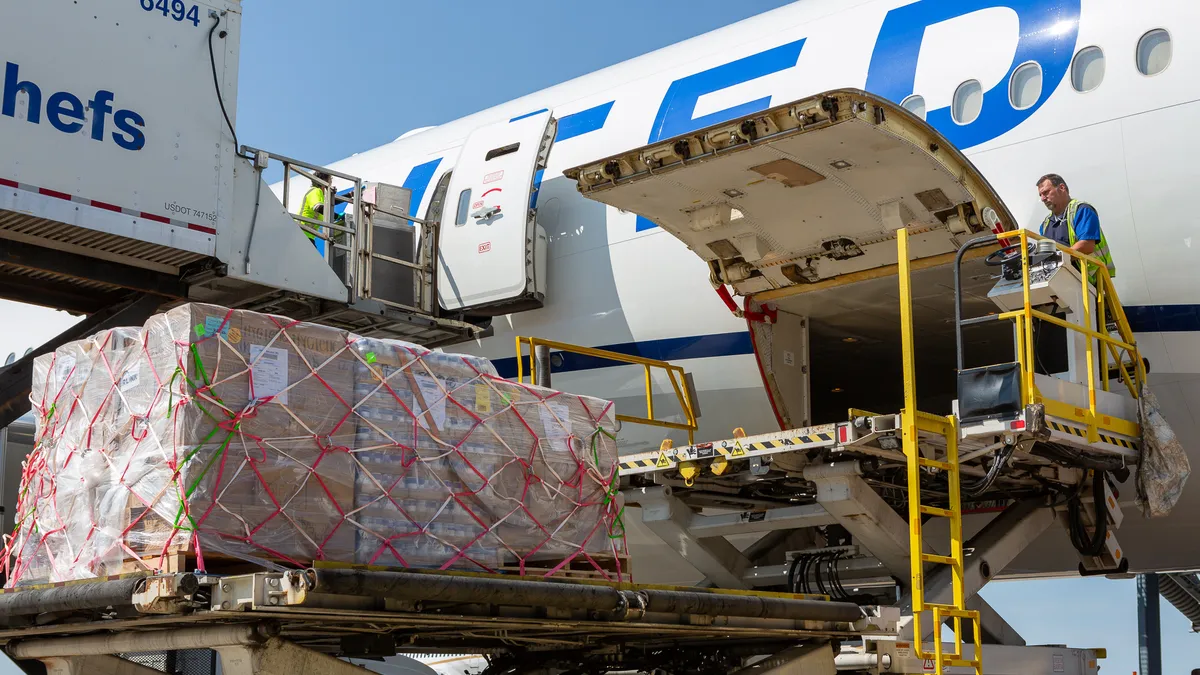Hiring was the name of the game in 2022 when a survey by Deposco and Supply Chain Dive’s studioID revealed it as a top priority for supply chain leaders. In 2023, however, hiring is fading out of focus for supply chain executives this year, while upskilling, automation and retention become the new workforce story. After years of labor shortages, supply chain professionals have realized they need to employ technology solutions that will simplify existing challenges, bring speed to value, and allow them to adapt their technology to growth.
In June 2023, an annual peak season survey of more than 150 supply chain leaders from retailers, wholesalers and 3PL/4PL firms explored preparations and predictions for the 2023 peak season. This year’s survey — again conducted by Deposco and Supply Chain Dive’s studioID — revealed that hiring is the main priority for only 8% of supply chain executives — even though labor turnover and retention remain top concerns for nearly four out of 10 respondents (38%).
Getting the best out of what you have
A new peak season priority emerged over hiring in 2023: a focus on digital upskilling among existing workers. Digital upskilling teaches employees the technical skills they need to thrive in an increasingly digital landscape. This is especially important as fulfillment operations move away from manual and paper-based fulfillment processes. Last year, only 4% of leaders reported this as their most important initiative. In the last 12 months, this number has seen huge growth, with 18% now identifying digital upskilling as their top priority.
Why is hiring fading out of focus in 2023, giving way to upskilling, automation and retention instead? It’s likely that supply chain executives are approaching the labor issue with eyes wide open, finally recognizing that hiring alone won’t completely address worker shortages. When supply chain leaders pull back to consider the larger picture, the productivity decline caused by labor shortages and the skyrocketing costs associated with hiring in a high-turnover industry ultimately have a detrimental impact on the bottom line.
“There’s no magic lever to pull that brings 100 new employees into your business,” said Josh Lett, senior vice president of professional services at Deposco. “Companies are now realizing that they must find ways to create their own labor in places where it doesn’t or won’t exist.”
Driving retention through innovation
By minimizing skills gaps and helping workers keep pace with transformation, digital upskilling helps logistics operations improve worker retention — a top concern for 35% of respondents. “People want to work for a company they can build their future with,” Lett says. “If you help them upskill, it’s better for them and for you. It causes workers to stay because their employer is investing in them. When you invest in the employee, the employee not only stays but also provides more productive output.”
The following three factors, all revealed in the survey, are likely contributors to the new workforce story for 2023 and the move from hiring to upskilling.
1. Consumer demand is getting hard to predict
With inflation once again being a top national and global issue impacting peak season, it’s no surprise that 44% of leaders expect a loss of purchasing power, reduced consumer demand, fewer sales and shifts in how people buy goods. One sign of buying habit changes can be found in Amazon Prime Day: For 75% of executives, Amazon’s annual sitewide sale is now being considered a peak event.
Johnson said that this data point could be a predictor of more peak season changes to come. “I think we’ll see more frequency for generated peak events,” he said. “They might be smaller, but they’ll occur more often throughout the year. Instead of sprinkling their purchases throughout the year, we may see more people waiting to buy certain items they want or need until certain peak events.”
2. Let the 3PLs handle it
Working with a 3PL is one way to handle increased order volume without needing to bring more staff in-house. There’s a steady increase in the number of businesses that plan to partner with a third party to simplify inventory management and fulfillment.
This year, 33% of supply chain executives plan to offload fulfillment to a 3PL during peak season (up from 7% in 2022), while 11% will offload fulfillment to a 3PL year-round (up from 4% in 2022).
3. Go for automation that prioritizes speed to value
Automation can help reduce dependence on labor, streamline high-volume processes, and mitigate human error. Survey respondents report that they’re more willing to invest in technology and automation this year to address supply chain issues during peak season. In fact, deploying more automation was named by 55% of supply chain leaders as the top strategy to address peak season labor issues (up from 11% in 2022).
The looming transportation and logistics worker shortage is driving more automation investments, with 43% of respondents saying that labor scarcity is forcing them to make larger pre-peak investments in technology, including automation, in order to ramp up effectively. When making these investments, it’s essential for businesses to find solutions that they can implement quickly and count on to scale with future growth.
“Now more than ever, there’s a need to invest in technology with an obvious ROI,” says Michael Johnson, vice president of business consulting at Deposco. “Especially if you’re relying on automation to help close the labor gap, it’s critical to be able to predict and measure ROI before investing in a warehouse management system or order management solution.”
For the first time in four years, supply chain executives were less rushed by outside forces, such as the pandemic, to make fast decisions and quick changes in response to fluctuating market conditions and demands. Presumably, supply chain leaders had more time to evaluate strategy, get back to business basics and ask this important question: Does the value justify the investment?
How do your preparations for peak season compare to what other supply chain leaders are doing? How equipped are you? Watch our webinar to learn more about peak season priorities, concerns and challenges in 2023.










